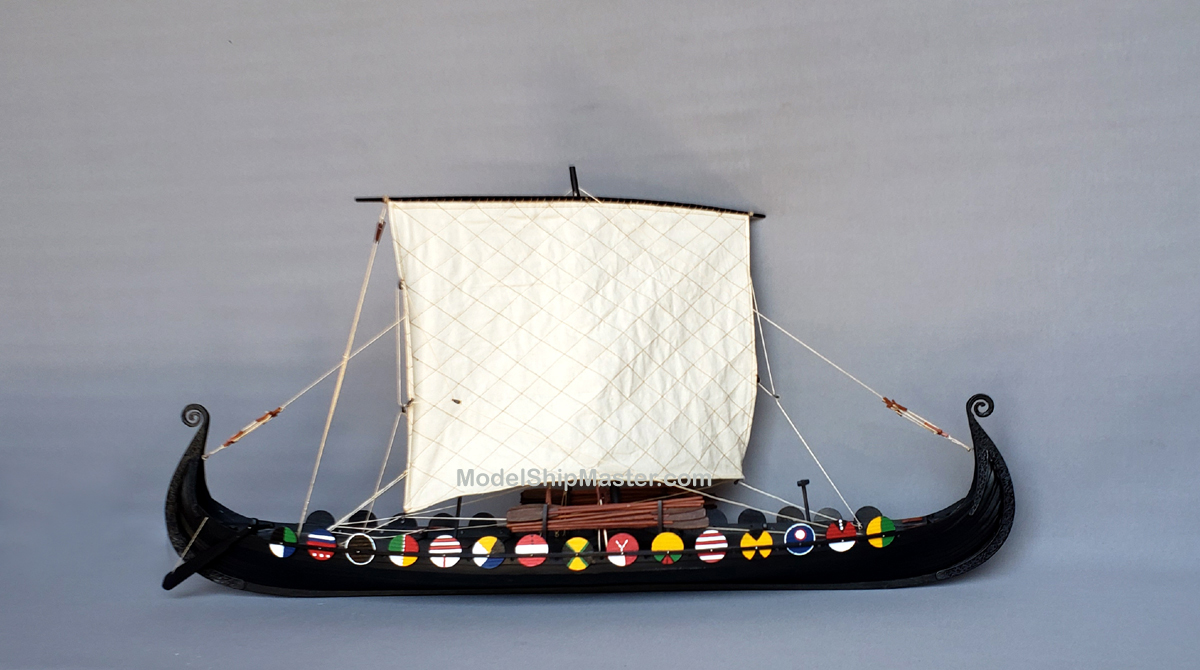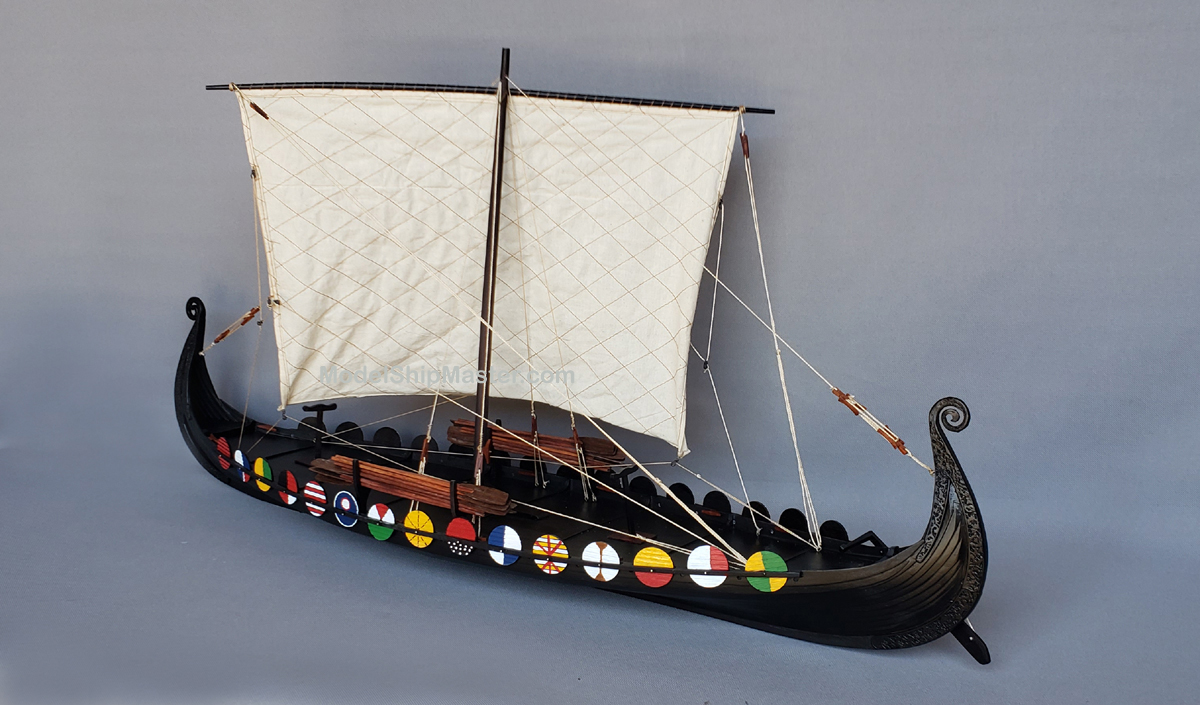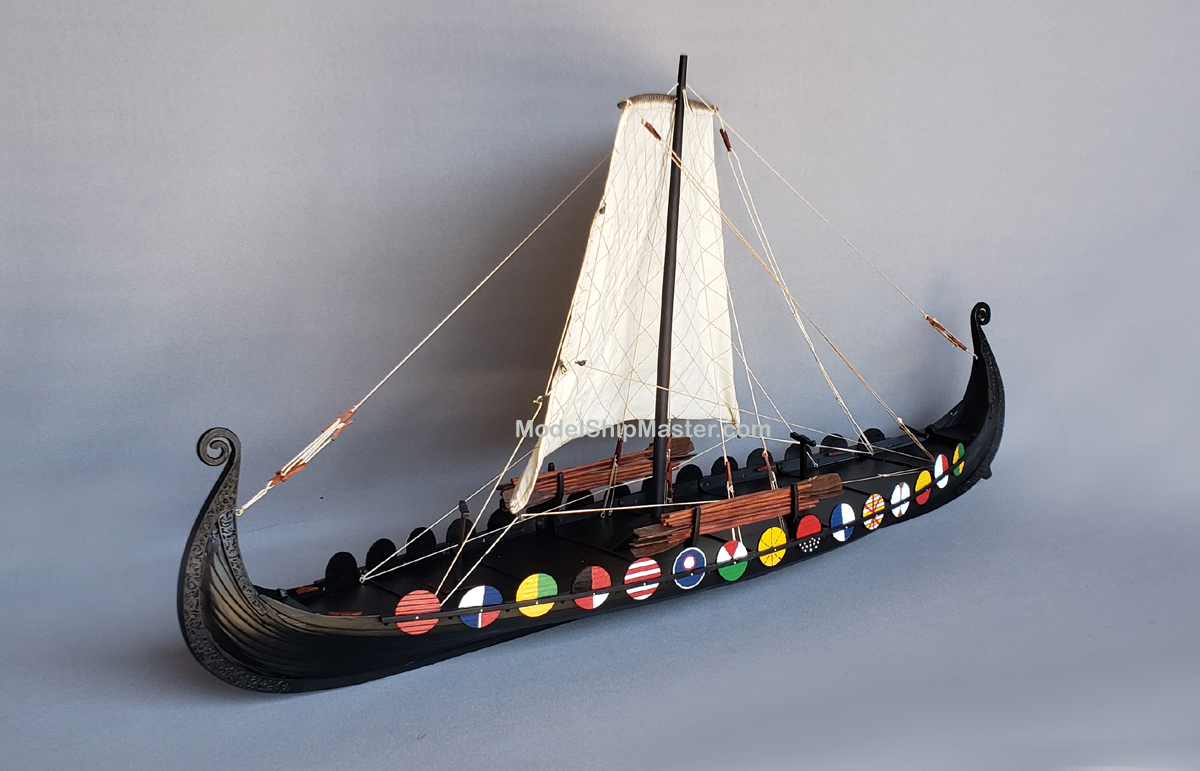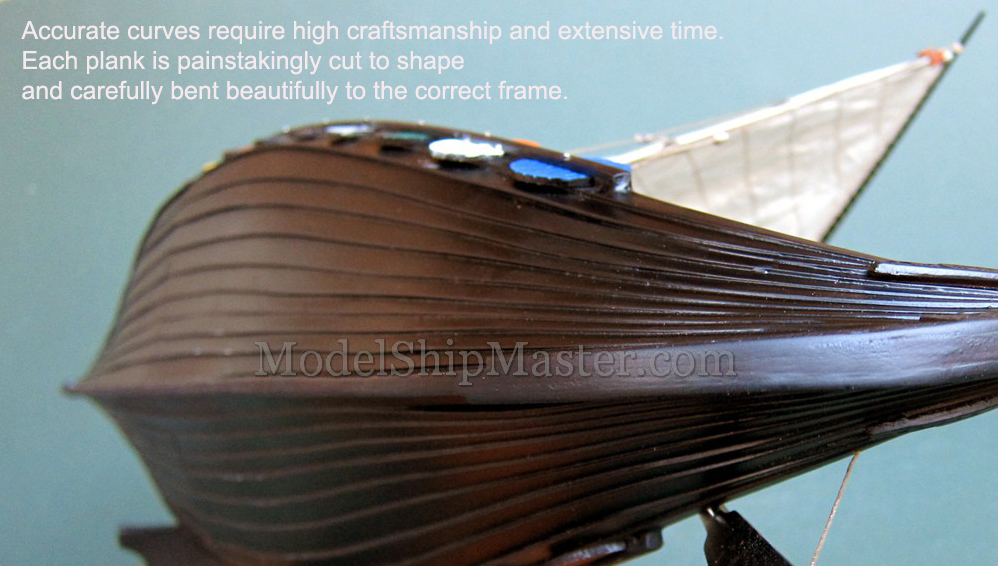|
VIKING SHIP MODEL For a large 55" long VIKING LONGSHIP, click
here.
The Vikings built many
different kinds of craft, from small fishing boats and
ferries, to their famous longships. The Viking ship had
duplicate, identical ends at the bow and stern. This
structural peculiarity allowed a ship to sail with
ease, especially in rivers and with minimal changes of
course.
The bow of a Drakkar Viking ship bore
the shape of a dragon, indicating that they belonged to
a king or nobleman. A typical Drakkar ship was powered
by oars or by the wind. There was no shelter on the ships. At night, sailors pulled their ships up on
land, took
the sail down and laid it across the ship to make a tent
to sleep under. If the crew was far out to sea they’d
sleep on deck under blankets made from animal skin. The
hardship of life on board meant that Viking sailors did
not make voyages in the winter.


Although Viking's most
striking achievements was their state-of-the-art
shipbuilding technology, their navigation ability was
what propelled their ships far. A Viking ship relied on
simple but sophisticated tools like the sun compass,
which used calcite crystals known as “sunstones” to
identify the position of the sun even after sunset or on
overcast days. Vikings did not use maps. They looked at
the position of the sun and the stars. They looked at
the color of the sea, the way the waves were moving and
the way the wind was blowing. Viking traders made much longer journeys when
seeking lands to settle, travelling to Iceland,
Greenland, Canada and North America.
Viking
ships eventually lost their combat value due to their
only disadvantages: their very low deck. They could not
face Mediterranean ships that had a much higher deck
ships that had two or three rows of oars (dromons,
biremes,
triremes, etc.) Those much heavier Mediterranean
vessels could easily sink Scandinavian ships by ramming
them and tearing them in half. In addition, when a
Viking ship approached a Mediterranean vessel, they
received shower of arrows from foe’s high deck.

This Viking ship model is
34" long x
19" tall x 11" wide
$1,570
 Shipping
and insurance in the contiguous USA included. Other
places: $400 flat rate.
Note that this is not a
kit. A
wooden base is included.
Shipping
and insurance in the contiguous USA included. Other
places: $400 flat rate.
Note that this is not a
kit. A
wooden base is included.
Our Viking model
travels well on water and can be used for funeral.


"You did a fantastic job
on the VIKING ship model! It looks like it came out of the museum in Oslo, Norway. You were right. It is museum quality work. It was well worth the wait. Thanks again. Until later. Steve."
"I opened my Xmas present
today......FANTASTIC....better than the photos !
Again thanks very much...have passed the word
around....Merry Xmas mate! S."
Learn more about
Viking ship model here:
https://en.wikipedia.org/wiki/Viking_ships
|